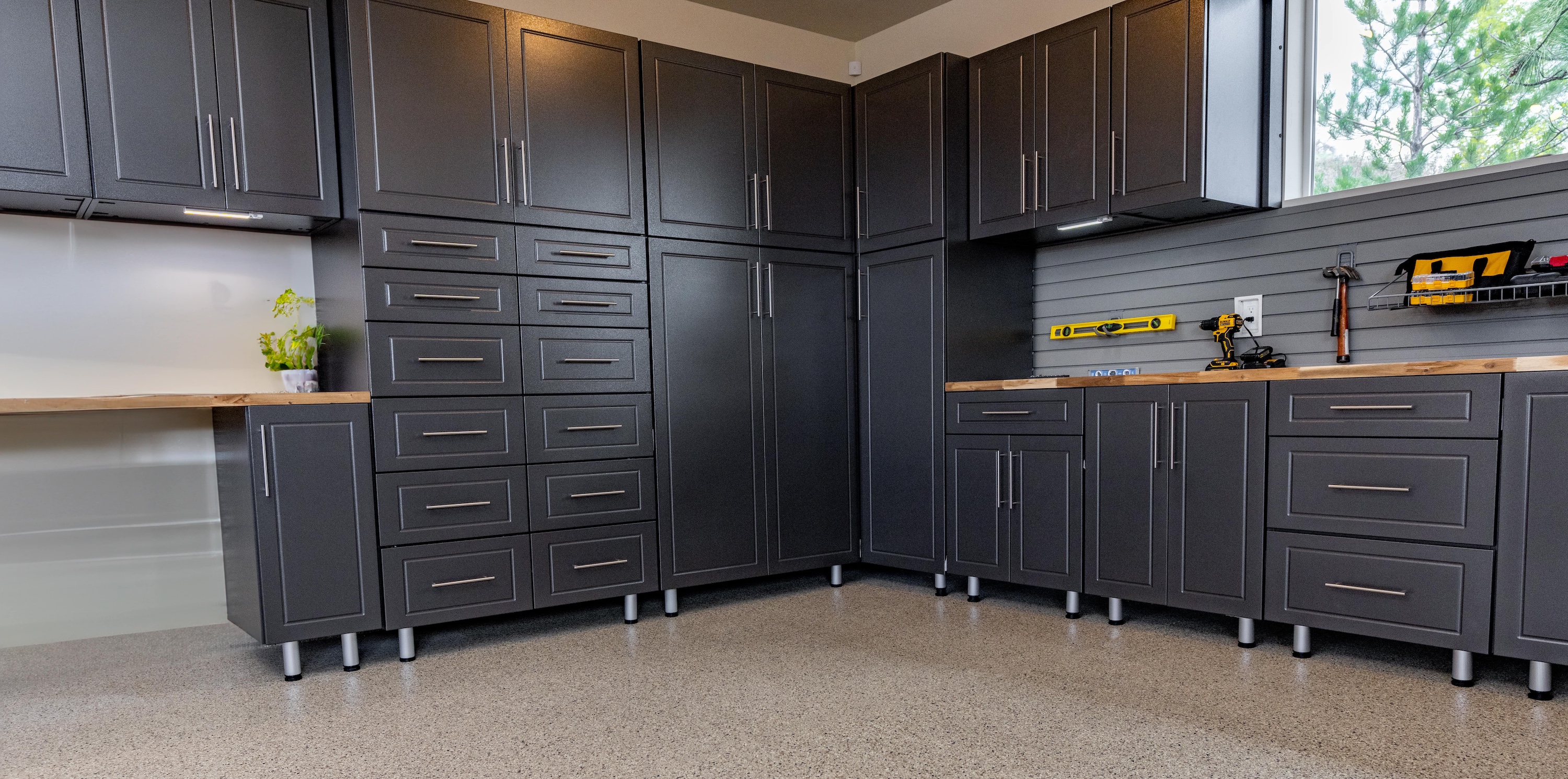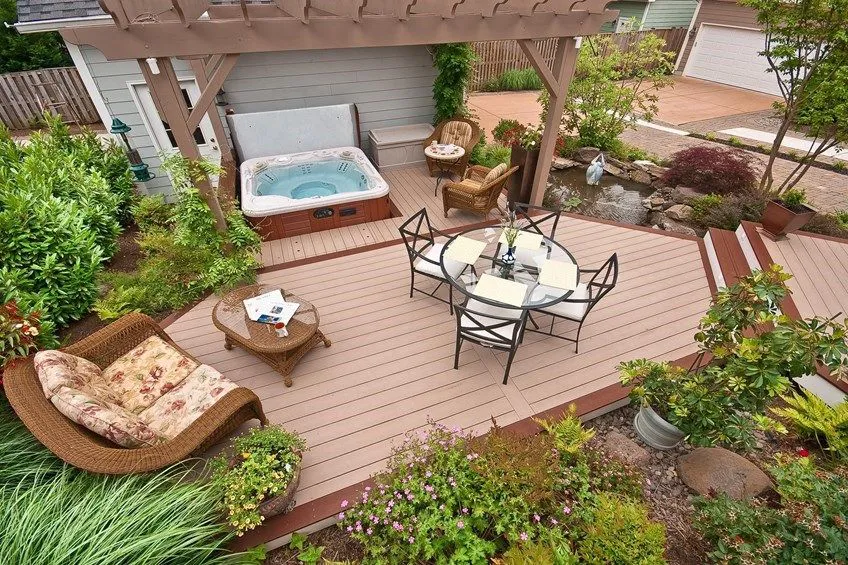How Much Does it Cost to Build a New Deck?

Are you considering adding a deck to your home? A deck gives you an incredible, highly functional outdoor living space where you can enjoy the great outdoors, bask in the sunshine, host parties, and play with kids without leaving behind all the comforts of home. However, before the start of construction, you'll need to consider several key factors, from pricing options to who will complete the installation.
When planning your deck construction, consider your return on investment as well. Installing a deck can be a valuable project when reselling your home. Not only will you enjoy it, but it will also be a significant draw to future buyers. A deck is one of the most cost-effective means of increasing the value of a property before putting it on the market. According to the 2023 Cost vs. Value Report by Remodeling, deck installation is one of the most valuable home additions in terms of the average cost of the job compared to the average resale value and overall return on investment.
Like all construction jobs, the cost to build a deck can fluctuate quite a bit; factors like labor, materials, deck size, customizations, and design are just a few elements to consider. To get a general estimate for your build, it's critical to take your time and think through your options. This guide will explore what to consider when you start making a budget.
- Labor Cost
- Deck Material
- Deck Design

Labor Cost
If you build the deck yourself, it will very likely have a lower up-front cost. Simple platform decks have a clean, classic appeal and are relatively easy to make. However, your project might require professionals if you want something more detailed than a simple platform. Consider whether you want the deck built quickly, if you have the necessary tools for the job, and whether you can take the time to do it yourself. You'll also need to be able to follow permitting guidelines, understand the required spacing of posts and bearers, and be sure you can complete the work safely.
If your main goal is to get a fabulous deck for minimum spend, keep in mind that if you tackle a DIY job without the right skills and tools, you could spend thousands for a deck missing the professional finish. Be honest with yourself about your level of ability and whether you have the know-how to design a deck as well as build it.
Budget how much you will spend, then discuss your ideas and concerns with a builder. When looking for a builder, it's best to look at examples of their previous work and, if possible, get a couple of quotes. Seek out a builder with great reviews and experience to ensure yours will be in good hands.
Deck Material
Part of planning a deck is choosing from the many available decking materials. The look and design of your deck surface and the overall cost will depend on the materials you use. Once upon a time, selecting a decking material was simple because wood was the only choice available. Today, other options range from composite to plastic, bamboo, fiberglass, PVC, and even fire-resistant decking. Traditionalists might always see wood as the ultimate decking material, but the new alternatives offer many enticing benefits, including longevity and low maintenance. Some of the most popular options are included in our list below.
- Pressure-treated wood: Wood decking is affordable, highly durable, and customizable. You can choose from cedar to redwood lumber and easily stain or paint to your preference. Maintain wood decks by pressure-washing and regularly staining and sealing.
- Composite decking: Made from plastic and wood, composite decking allows you the best of both worlds. It's scratch-resistant and easy to maintain. Composite is also resistant to termites and warping. Although it costs more than wood decking, composite can be cleaned with a hose and doesn't need to be stained or sealed, something to consider when planning out the lifetime maintenance required for your deck.
- PVC decking: PVC boards are made of all-plastic material that will not scratch, crack, or splinter. They also won't require stain, paint, or sealant and are pest and termite-resistant. You shouldn't pressure wash PVC, but you can easily clean it with soap and water.
- Deck tiles: Deck tiles are an interlocking system that allows you to create custom patterns on your deck surface. Deck tiles can be made from composite or wood.
The materials you use for deck customizations, like deck railings, stairs, and enclosures, are also necessary. Depending on your deck plan and design, you'll need to remember these elements when mapping out your overall budget.
- Deck Railings: Typically, the material you choose for your deck should also be the same material you use for the railings. Wood is the most common option.
- Stairs: While your stair landing should be concrete, deck stairs are made from pressure-treated lumber called stringers and feature a few components (hangers, risers, treads, and railing).

Deck Design
A well-designed deck should be an expression of how you live. Your deck should be large enough to comfortably handle all the activities you want to take place on it. Additionally, ensure the deck design accounts for your home's windows and doors and won't conflict with the deck's railing.
Remember that single-platform decks are usually easier to build and more cost-effective. Raised decks will require extras like railings and more structural support for safety. If you want to save money, choose a simple style that will fit your needs. If you are looking to make a more significant investment, you may want to consider these lavish deck design styles:
- Wrap-around decks are usually attached to your home and typically cost $5,000 – $20,000. If your property has appealing scenery, wrap-around decks help you enjoy the view.
- Decks with intricate designs that include curves and detail can cost $5,000 – $20,000.
- Decks with built-in seating can cost $5,000 – $20,000.
- Raised foundations are great on uneven terrain and in flood zones. Expect to pay around $3,000- $15,000 for a raised foundation deck.
- Floating or freestanding decks are not attached to your home and typically cost $5,000 – $25,000.
- Multi-level decks are a great way to separate your deck into parts, costing around $35 – $100 per square foot.
Choosing Webfoot Home Improvements to Build Your Deck
Our team comprises true craftsmen specializing in designing, layout, care, know-how, and maintenance of decks and outdoor living spaces in Bend and surrounding areas. You won't catch us remodeling kitchens or building homes, but we're a seriously incredible team for the job regarding natural wood decks and composite decks like Trex. Contact us today!






